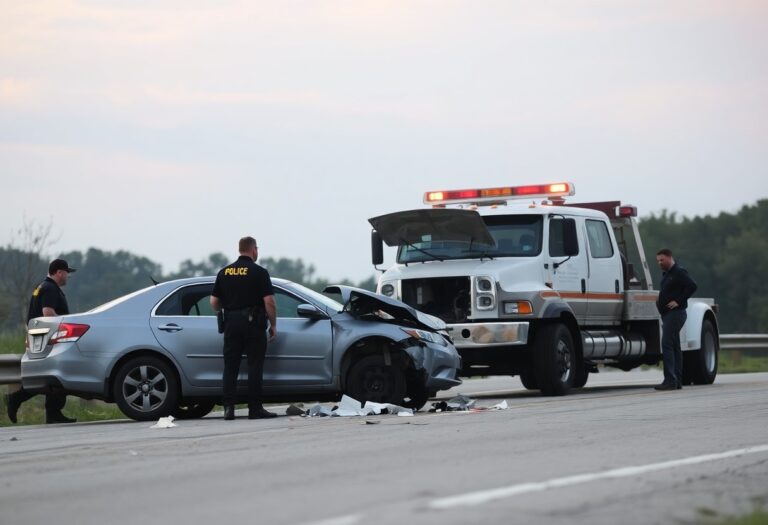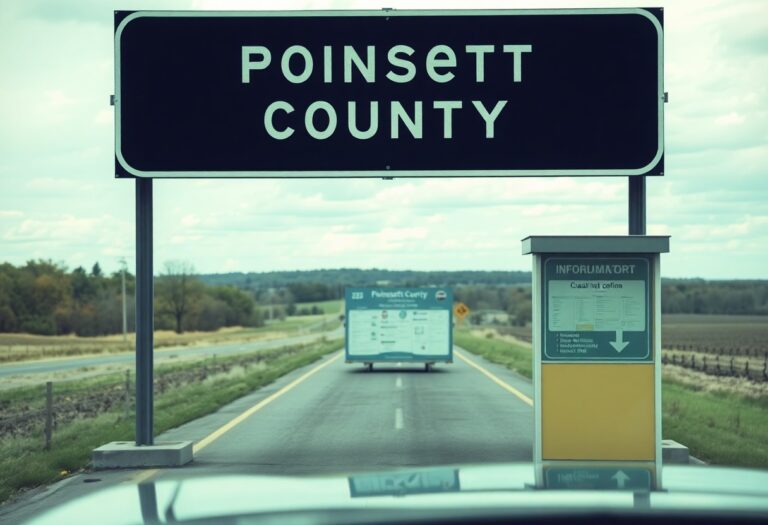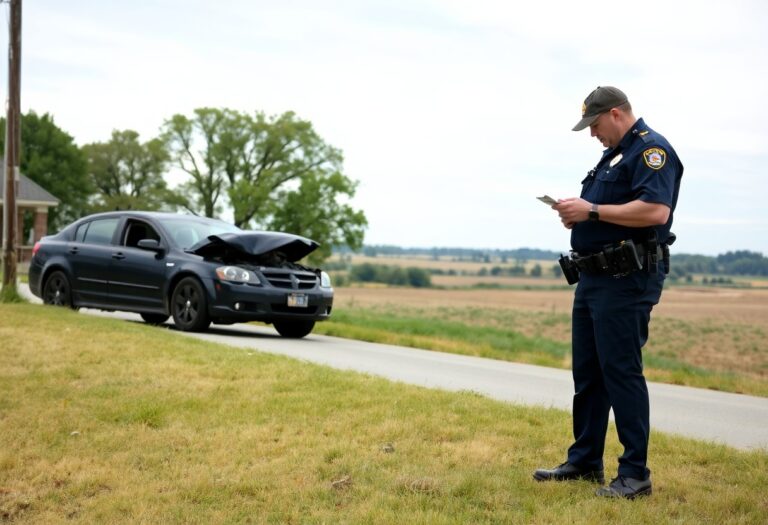Sumner County is a vibrant community that understands the importance of providing you with the information you need following a vehicle accident. When you need to access your crash report, knowing the right steps can facilitate a smoother process. In this post, you’ll learn about the key resources available to you, including how to request your report effectively and what information you need to have on hand. Your understanding of these procedures can be empowering in navigating any aftermath of a crash.
Navigating the State Web: Where to Start Your Search
Your journey to obtain a crash report begins online. The Tennessee Department of Safety and Homeland Security is a reliable starting point, providing access to crash reports through their official website. You can easily find the specific forms and guidance needed to locate your report by navigating through their portal. Simply input your details and follow the prompts, which will help streamline the process and reduce any potential confusion.
Official Resources for Crash Reports
Utilizing official online resources is key to quickly accessing your crash report. The Tennessee Department of Safety’s website offers not only the necessary forms but also instructions on how to request a report. Additionally, some law enforcement agencies have their own portals for crash reports, providing various options depending on where the accident occurred.
Important Contact Information
Having the right contact information on hand can save you time and effort throughout the process of obtaining your crash report. The Sumner County Sheriff’s Office can be reached at (615) 442-1010 for direct inquiries related to accident reports. For further state-level assistance, contacting the Tennessee Department of Safety and Homeland Security at (615) 251-5166 can provide more comprehensive support regarding crash documentation.
This direct line to the Sumner County Sheriff’s Office ensures you can quickly address any questions or issues that arise as you attempt to access your accident report. By having this information and knowing which department to contact, you streamline your experience, allowing you to focus on what truly matters: understanding your rights and responsibilities in the aftermath of the accident.
Understanding the Process: How to Request Your Report
Obtaining your crash report in Sumner County, Tennessee, requires a clear understanding of the steps involved. You’ll need to gather the relevant information about your accident, fill out a request form, and submit it appropriately, either online or in person. These measures ensure that you have accurate and quick access to your report.
Step-by-Step Guide to Filing a Request
| Step | Description |
|---|---|
| 1 | Collect your information: accident date, location, and parties involved. |
| 2 | Visit the Tennessee Department of Safety and Homeland Security website. |
| 3 | Fill out the online request form or download it for mailing. |
| 4 | Include payment information, if required, along with your submission. |
| 5 | Submit your request online or mail it to the designated address. |
Common Pitfalls and How to Avoid Them
Many individuals encounter obstacles when requesting their crash reports, resulting in delays. Failing to provide accurate or complete information, omitting required documentation, or not following submission guidelines can lead to complications. Ensure all details are correct and follow each step to streamline the process.
To sidestep common pitfalls, double-check the information you provide against official documents. For instance, listing inaccurate accident dates or details about other parties involved can stall your request. Avoid last-minute submissions by requesting your report as soon as possible, allowing you ample time to deal with any unexpected issues. Taking proactive measures ensures you have your crash report in a timely manner, minimizing frustration and delays.
The Cost of Access: What You Should Expect to Pay
Accessing your crash report in Sumner County incurs certain fees that vary depending on various factors. Generally, you can expect to pay between $4 to $10 for a physical copy of the report, while online requests may incur a service fee. Be prepared to provide payment upfront, as fees are non-negotiable and are set by local authorities to cover administrative costs.
Breakdown of Fees Associated with Crash Reports
The fees for crash reports typically include a base cost for obtaining the report, usually around $4 for a standard paper copy. If you opt to access the report online, additional service fees may increase the total to about $10. Expedited requests might also carry a premium charge. Thus, you should account for these variations when budgeting for your report.
Options for Fee Waivers
In certain circumstances, you might qualify for a fee waiver when requesting your crash report. This can apply if you are involved in ongoing legal proceedings related to the incident or if you demonstrate financial hardship. Sometimes, nonprofit organizations assisting victims may also help cover or waive these fees.
If you’re facing financial difficulties, you may provide evidence of your situation to your local reporting agency, such as proof of income or government assistance. By doing this, you can potentially obtain a fee waiver for your crash report request. Be sure to communicate any special circumstances to the local authorities, as they may have specific guidelines or forms needed to apply for a waiver. Understanding your eligibility can save you considerable costs while ensuring that you have access to the necessary information contained in your crash report.
Decoding Your Report: What Each Section Means
Your crash report is a comprehensive document that outlines all critical aspects of the accident. Each section serves a purpose, providing insights into what transpired. Generally, you’ll find details such as the date, time, and location of the crash, the parties involved, vehicle information, and witness statements. Understanding these components enables you to take appropriate actions in your case.
Key Elements of a Crash Report Explained
The crash report consists of imperative components, such as the diagram of the accident scene, descriptions of injuries, and any contributing factors like weather conditions or road hazards. Each element plays a pivotal role in illustrating the accident’s context, which can help you establish liability or determine insurance claims. Notably, the collision diagram visually represents vehicle positions, often aiding in understanding how the accident unfolded.
How to Interpret Data for Your Case
Interpreting the data accurately can significantly impact your case. Focus on identifying the factors that contributed to the accident, such as speeding or distracted driving. Cross-reference this information with eyewitness accounts and any available surveillance footage. For example, if the report notes that conditions were slippery, it may substantiate claims about negligence. Keep a close eye on injury details, as these will be crucial for any potential compensation.
Analyzing this data allows you to create a narrative that supports your position. If the report indicates that the other party had previous traffic violations, this context can strengthen your case for accountability. Additionally, understanding the timeline of events laid out in your report can help clarify responsibilities and help you prepare for discussions with insurance adjusters or legal counsel. Your approach should be thorough, as even the smallest details might impact the outcome of your case.
Beyond the Report: Legal Considerations After a Crash
Taking action after a crash involves more than just obtaining your report. Various legal implications can arise from your situation, including potential claims for compensation or disputes over liability. Understanding these nuances can help you navigate the aftermath effectively and ensure your rights are adequately protected.
When to Consult an Attorney About Your Crash
Consult an attorney if your crash results in injuries, property damage, or if liability is contested. Legal representation becomes imperative when dealing with insurance claims or understanding your rights, particularly if you plan to pursue compensation for damages incurred during the incident.
Essential Documentation to Have for Legal Proceedings
Having the right documentation can significantly bolster your case during legal proceedings. Key documents include the crash report, medical records, photographs of the accident scene, and any witness statements, all of which provide vital evidence to support your claims.
Specifically, your crash report serves as the foundational evidence outlining the incident’s details, while medical records reflect the severity of injuries sustained. Including photographs can illustrate the crash’s impact on vehicle conditions, and witness statements offer third-party perspectives that can validate your account. These documents collectively work to establish a strong case as you navigate potential legal claims or insurance negotiations in Sumner County.
Final Words
With this in mind, accessing your crash report in Sumner County, Tennessee is streamlined and straightforward. You can easily navigate the required steps, whether it’s online or in-person. Understanding the process will not only save you time but also ensure you have all the necessary information for your records or potential claims. By utilizing the available resources, you empower yourself to handle the aftermath of a vehicle accident efficiently.













